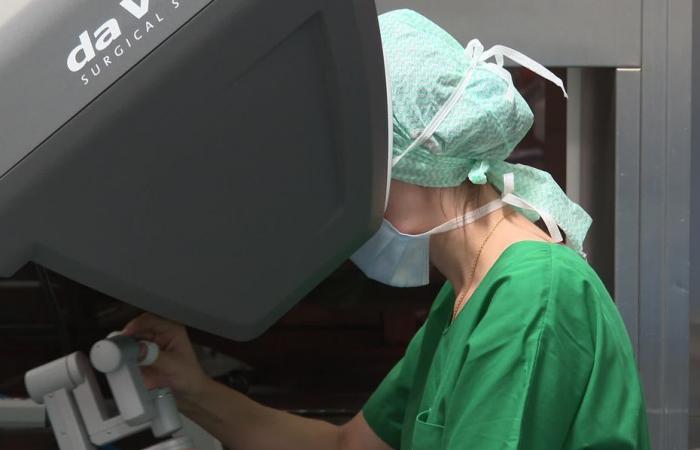For three years, the Clermont-Ferrand University Hospital has been using robot-assisted surgery to treat prostate cancer. Objective: to perform more precise interventions and provide faster recovery for patients.
Company
From daily life to major issues, discover the subjects that make up local society, such as justice, education, health and family.
France Télévisions uses your email address to send you the “Society” newsletter. You can unsubscribe at any time via the link at the bottom of this newsletter. Our privacy policy
With nearly 60,000 new diagnoses each year, prostate cancer is the most common in men. It is also the third deadliest cancer, after lung and colon cancer. Diagnosed from the age of 50, it has now been treated by robot-assisted surgery at the Clermont-Ferrand University Hospital for three years. This technique offers greater comfort for the surgeon and, above all, better results for the patient.
More precise
Equipped with a pair of scissors and forceps, the robot is ready to remove the patient’s prostate. Two surgeons control the robot’s articulated arms using control screens, allowing them to navigate with great precision inside the body. “We have optimal vision of the operating site”specifies Dr Clémentine Millet, urologist at Clermont-Ferrand University Hospital. “In open surgery, the view can sometimes be obstructed, but here we have a direct view of the organ to be operated on. The precision is therefore significantly improved. Unlike laparoscopy, which offers 3D vision, this technology allows us a complete 360-degree view of our instruments. »
duration of video: 00h01mn51s
VIDEO. Prostate cancer: when a robot helps the surgeon
•
©J. BOSCQ / S. BONNETOT / P. RACLET / FRANCE 3 AUVERGNE
Better post-operative follow-up
This better precision leads to better results. With open surgery, one in two patients suffers from side effects, while with robot-assisted surgery, only one in ten people are affected. Post-operative follow-up is also lighter. “When I started, patients were discharged from the hospital about seven days after the urinary catheter was removed”explains Dr Clémentine Millet. “They were also equipped with drains. Today, they go out with only a urinary catheter. From the evening of the operation, they can sit in a chair, walk the next day, and often go out on the second day. »
Surgeons at Clermont-Ferrand University Hospital carry out a prostate removal operation using a robot.
•
© Sébastien Bonnetot / FTV
Thanks to this technology, the hospital now performs 70 prostate ablations per year, compared to around ten previously. Jean*, diagnosed at age 50 and operated on last year, talks about his experience. “I didn’t have a fever. My scar, which should have measured 15 cm, is actually only 4 cm for the largest of them. I had the chance to meet Professor Lilerot. Preliminary examinations showed that everything was fine. If we hadn’t gone further in the exams, I might not be here today, or in a very different state. »
Prostate cancer is the third deadliest cancer in France, but its mortality rate decreases each year by around 2%.
Comments collected by Julien Boscq / France 3 Auvergne.
*The first name has been changed.






